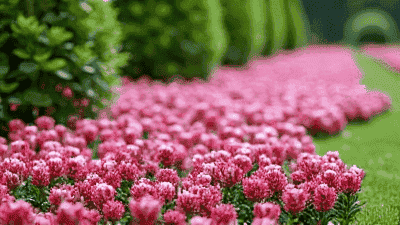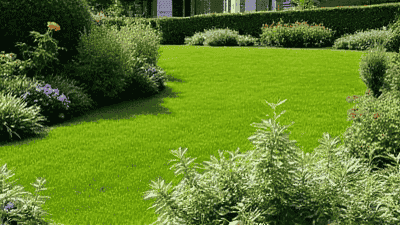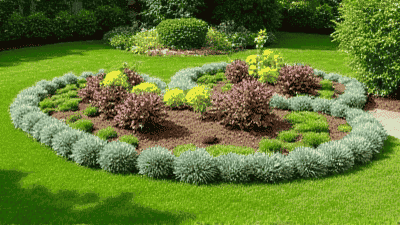
Ground cover plants serve multiple purposes in landscape design, from minimizing weed growth and soil erosion to creating beautiful, lush landscapes that can dramatically enhance the aesthetic appeal of your garden. A well-designed ground cover garden can transform your outdoor space, providing texture, color, and even habitat for beneficial wildlife.
Before diving into the details of creating your garden, it is essential to understand what ground cover plants are and their various benefits. Ground cover plants are low-growing species that spread across the soil surface, often forming a dense mat of foliage. They usually require minimal maintenance and provide cover in areas where conventional grass may struggle to grow.
Weed Suppression: Dense ground cover helps to block sunlight from reaching weed seeds, reducing the likelihood of unwanted growth.
Soil Erosion Control: Ground cover plants stabilize soil by anchoring it with their root systems, which can be particularly beneficial on slopes or in areas prone to erosion.
Moisture Retention: Ground cover creates a protective layer over the soil, helping to retain moisture and reducing the need for frequent watering.
Aesthetic Appeal: A diverse selection of ground cover plants can create beautiful landscapes with varied textures and colors, providing year-round interest.
Wildlife Habitat: Ground cover gardens can provide shelter and food for beneficial insects, birds, and other wildlife, promoting biodiversity.

When selecting ground cover plants for your garden, several factors come into play. It is vital to choose plants that are suited to your specific environment, including soil type, sunlight exposure, and climate. Here are some important considerations for selecting the right plants:
Different ground cover plants have varying sunlight requirements. Identify specific areas of your garden that receive full sun, partial shade, or full shade, and select plants that thrive in those conditions.
Conduct a soil test to determine the pH level and nutrient content of your soil. Ground covers thrive in different soil types, so understanding your soil conditions is crucial for plant selection.
Select ground cover plants that are well-suited to your climate zone. This includes considering factors such as temperature ranges, humidity levels, and growth habits. Consult a local gardening resource or extension service to find out which plants perform best in your area.
Here are some popular ground cover plants to consider based on the aforementioned factors:
Once you've selected the right plants for your ground cover garden, it is time to prepare your soil properly. Soil preparation is key to ensuring that your plants have the best chance to establish themselves and thrive.
Clear the Area: Begin by removing existing vegetation, including weeds, grass, and any debris. This can be done manually or with the use of landscape fabric to suppress weeds.
Test the Soil: Conduct a soil test to determine pH, nutrient levels, and soil texture. Based on the results, amend the soil accordingly with organic matter, fertilizer, or lime, as needed.
Loosen the Soil: Use a garden fork or tiller to loosen the top few inches of soil. This improves drainage and encourages root growth.
Level the Ground: Rake the area to create an even surface, filling in any low spots to encourage even water distribution.
Improve Soil Quality: Incorporate organic matter such as compost to improve soil structure, drainage, and nutrient content. Aim to mix in about one to two inches of compost into the top layers of soil.

Now that your soil is prepared, it is time to plant your ground cover. Follow these guidelines to ensure successful planting:
Planting times vary depending on your climate and the specific plant species you choose. In general, spring and early fall are the best times for planting ground covers:
Spacing: Determine the appropriate spacing based on the mature size of the plants. Some ground covers spread more quickly than others, so refer to plant guides for specific recommendations.
Digging Holes: Use a hand trowel or garden spade to dig holes that are slightly larger than the root ball of each ground cover plant. Space holes according to your planting plan.
Planting: Remove plants from their pots and gently loosen any tightly bound roots. Place each plant in its designated hole, ensuring the crown sits level with the soil surface.
Backfilling: Fill around the roots with soil, gently pressing down to eliminate air pockets. Ensure that the plants are well-secured in the soil.
Watering: Water each newly planted ground cover thoroughly to help settle the soil and encourage root establishment. Keep the soil consistently moist for the first few weeks until the plants are established.
Once planted, maintaining your ground cover garden is crucial for its long-term success. Ground cover plants are generally low-maintenance, but proper care is essential during the establishment phase and beyond.
Most ground cover plants do not require heavy fertilization. However, if your soil test indicates nutrient deficiencies, consider applying a balanced, slow-release fertilizer in early spring. Follow the manufacturer's guidelines for application rates.
As ground cover plants grow, they may require occasional pruning to maintain their shape and prevent invading other garden areas. Regularly trim back any excessive growth and remove any dead or diseased foliage to promote healthy growth.

Ground cover plants are generally resilient, but they can still be susceptible to pests and diseases. Monitor your plants regularly for signs of problems and address issues promptly.
Creating a ground cover garden provides more than just beauty and functionality; it can also encourage biodiversity and support local wildlife. Here are some ways to foster a wildlife-friendly environment:
Choose native ground cover plants that are adapted to your local climate and soil conditions. Native plants provide food and habitat for local wildlife and promote a healthy ecosystem.
Incorporate flowering ground cover plants, such as creeping thyme or ajuga, that attract pollinators like bees and butterflies. A diverse array of blossoms provides essential resources for these beneficial insects.
Add features such as birdhouses, bee hotels, and water sources to encourage wildlife in your garden. Ensuring that these elements complement your ground cover plants creates a balanced ecosystem.
Limit the use of chemical pesticides in your garden, opting for organic alternatives when necessary. This practice protects beneficial insects, pollinators, and other wildlife that play a vital role in ecosystem health.
Ground cover gardens require consideration of seasonal changes that can affect plant performance and appearance. Here are some seasonal tips to keep your garden thriving year-round:
Creating a ground cover garden that thrives is a rewarding journey that requires careful planning and thoughtful design. By choosing the right plants for your specific conditions, preparing your soil, and establishing proper maintenance practices, you can cultivate a vibrant and functional ground cover garden that enhances the beauty of your landscape.
Ground cover gardens not only contribute to the aesthetic appeal of your home but also offer numerous ecological benefits, promoting biodiversity and offering habitat to wildlife. As you embark on this gardening endeavor, remember to adapt your strategies to the unique conditions of your garden and enjoy the process of watching it flourish.
Utilizing the steps outlined in this guide, you can successfully create a beautiful and thriving ground cover garden that adds character to your landscape for years to come.